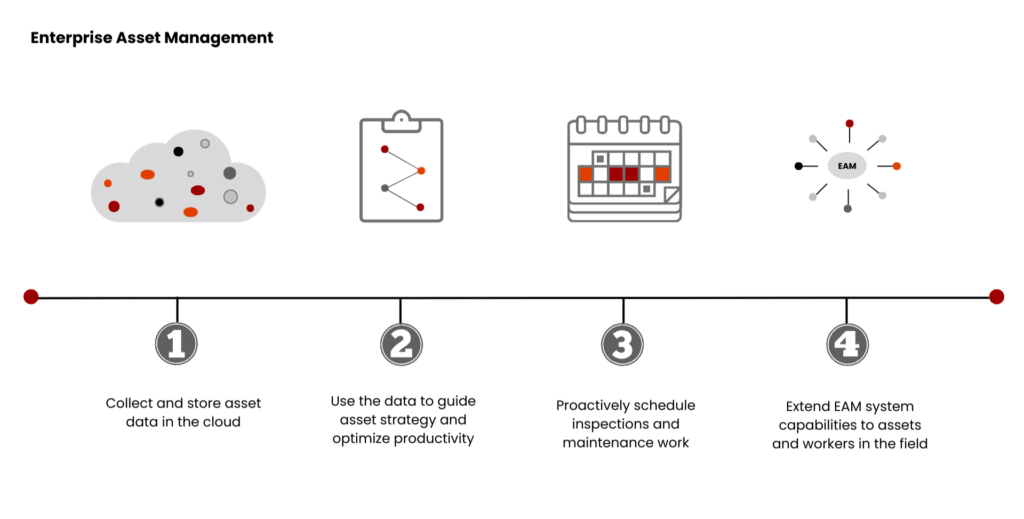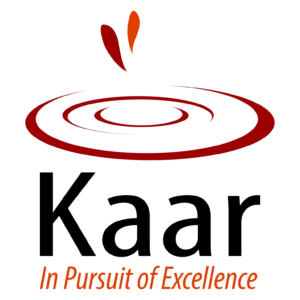Are you satisfied with your asset management system’s performance?
If your answer is yes, then consider the following questions:
Are you able to proactively identify and address potential equipment failures before they occur?
Are you often faced with unexpected equipment breakdowns that disrupt your operations and lead to costly downtime?
Do you face challenges in maintaining optimal stock levels and reducing carrying costs?
I guess you are questioning yourself right now.
Realizing that you need a transition. But, worried about ‘What can be the ideal Solution?’
Then it’s time to take a look.
SAP EAM, a software that can help you plan, optimize, execute, and track all activities related to your assets, from maintenance to disposal. With this, you can manage all your asset information in one place, leading to increased productivity, improved efficiency, and streamlined planning and scheduling.
Let’s learn more about SAP EAM in this blog.
SAP EAM: An Introduction
The SAP EAM (Enterprise Asset Management) software solution is a complete tool created to simplify and improve the administration of physical assets throughout the entire life cycle. Organizations can utilize it to enhance the maintenance strategies, boost operational effectiveness, decrease downtime, and make data-driven decisions for efficient usage of assets and maintenance.
There is often a misconception between SAP EAM and SAP CMMS. If you are confused about the difference, then here is the gist of it.
Difference between SAP EAM and SAP CMMS
A wider concept known as SAP EAM covers the complete lifespan of assets, including maintenance, operations, and financial elements.
As a component of EAM, SAP CMMS (Computerized Maintenance Management System) focuses largely on maintenance tasks, including work orders, scheduling preventative maintenance, and asset tracking.
| Feature | SAP EAM | SAP CMMS |
| Scope | Manages the full asset lifespan, including the design, installation, operation, and maintenance phases. | Focuses on maintenance management and related activities.
|
| Functionality | Includes extensive asset management features including work order management, preventative maintenance, and asset monitoring. | Offers capabilities tailored to maintenance, such as resource management, work order scheduling, and maintenance planning. |
| Complexity | Offers advanced functionalities and is suitable for complex asset management scenarios in large organizations. | Focuses on basic maintenance management requirements and is adaptable to different-sized companies. |
| Asset Types | Supports the administration of a variety of asset classes, such as infrastructure, vehicles, buildings, and equipment. | Primarily concentrates on equipment assets, such as tools, machinery, and vehicles. |
| Maintenance Strategies | Enables the implementation of functionality for various maintenance techniques, including preventive, predictive, and corrective maintenance. | Supports normal maintenance chores and preventative maintenance measures, such as planned inspections. |
| Cost Management | Includes cost management features for tracking maintenance expenses, budgeting, and cost analysis. | Focuses on cost tracking for individual work orders, maintenance cost control, and maintenance activity budgeting. |
Let’s move onto the core part of SAP EAM.
Working of the SAP EAM Module 
SAP EAM operates through a combination of features and functionalities that enable efficient asset management. Here’s a simplified overview of how SAP EAM typically works:
Gather and store asset data in the cloud
Make the most of the cloud’s flexibility to gather and track asset data in a centralized data repository. To understand how assets are doing and where attention is required, use advanced analytics to extract in-depth data.
Utilize the data to enhance productivity and steer asset strategy
Assess risk and forecast equipment failures using machine learning, digital twin technologies, and predictive analytics. Determine and complete maintenance tasks in advance to maximize asset availability.
Plan ahead and schedule inspections and maintenance tasks
Plan, schedule, and carry out maintenance tasks and inspections using integrated processes and data. Prioritize vital resources to reduce downtime. Quickly identify, communicate, and fix problems.
Extend EAM system capabilities to assets and employees
Using cutting-edge graphics and location services, manage work orders and asset processes online or offline. Integrate GIS data to provide distant employees and assets with a map-based user experience. Track and manage work orders, data, and maintenance operations from anywhere.
We have a lot of brainstorming components in SAP EAM; let’s have a look at them.
Top 5 Components in SAP EAM Module
-
SAP Asset Performance (APM)
The objective of SAP APM is to improve asset dependability and performance. To optimize asset operations, it makes use of sophisticated analytics, machine learning, and predictive maintenance technologies.
Organizations can utilize it to monitor the health of assets, find abnormalities, foresee problems, and recommend maintenance procedures. In-depth analytics and reporting capabilities are also offered by SAP APM to assess asset performance, spot optimization possibilities, and promote continuous development.
-
SAP Business Network Asset Collaboration
Between asset owners, service providers, and other stakeholders, SAP Business Network Asset Collaboration facilitates communication and information exchange.
By enabling effective vendor management, service-level agreement monitoring, and performance tracking, the platform improves transparency, efficiency, and accountability in asset management procedures. Organizations are able to improve cooperation, raise the level of service, and achieve better results in your asset management procedures with the help of this component.
-
SAP Field Service Management
Managed field service activities for assets are the main emphasis of SAP Field Service Management. It makes it possible to efficiently dispatch, schedule, and track field experts, providing prompt maintenance and repair services.
This enables businesses to optimize technician assignments based on availability, abilities, and location, enhancing customer satisfaction and response times. By providing real-time updates, the system enables employees to access work orders, record service activities, and collect client signatures via mobile devices.
-
SAP Crowd Service
SAP Crowd Service makes use of crowd sourcing to improve maintenance and servicing procedures. In order to carry out maintenance operations, it enables enterprises to connect with a network of outside service providers, specialists, or subject matter experts.
Service requests are submitted on a mobile application, where competent people can accept the request and perform them. It provides advantages such as increased adaptability, quicker reaction times, accessibility to specialist abilities, and cost reduction.
-
SAP Service and Asset Manager
The management of assets’ service-related features is the objective of SAP Service and Asset Manager. It allows businesses to easily manage work orders, service contracts, and requests for customer care.
Service-level agreements can be tracked, tasks can be scheduled, technicians can be assigned, and service performance can be tracked with this component. It offers features for creating service orders, dispatching, ensuring prompt and precise service delivery.
To conclude
For operations to be optimized and expenses to be cut, proper asset management is essential.
Have you found any weakness in your present asset management system?
Do you need a trustworthy implementation partner to improve your asset management procedures?
KaarTech can help with that.
What advantages do you see for your company in a cooperation with KaarTech?
With our knowledge of SAP systems, we can serve as your reliable implementation partner, assisting you with everything from system configuration to user training. We are the perfect partner to convert your asset management system and maximize its potential due to our dedication to quality and client satisfaction.
To begin your path toward better asset management skills, contact KaarTech right away.
FAQ’s
What is SAP EAM?
SAP EAM (Enterprise Asset Management) is a module within the SAP ecosystem that enables organizations to efficiently manage and maintain their assets throughout their lifecycle, optimizing operations and reducing costs.
How does SAP EAM help organizations in managing their assets more efficiently?
SAP EAM helps organizations enhance asset management by providing comprehensive tools for maintenance planning, scheduling, and execution. It enables real-time insights, and predictive analytics, leading to improved asset performance, reduced downtime, and better resource allocation.
Can SAP EAM integrate with other modules within the SAP ecosystem?
Yes, SAP EAM can seamlessly integrate with other modules within the SAP ecosystem, such as SAP ERP, SAP PM, and SAP HCM, enabling comprehensive end-to-end asset management and integration of data and processes.
What are the features of SAP EAM module?
The features of SAP EAM include asset lifecycle management, maintenance planning and scheduling, work order management, predictive maintenance, mobile access, analytics and reporting, and integration with other SAP modules.
